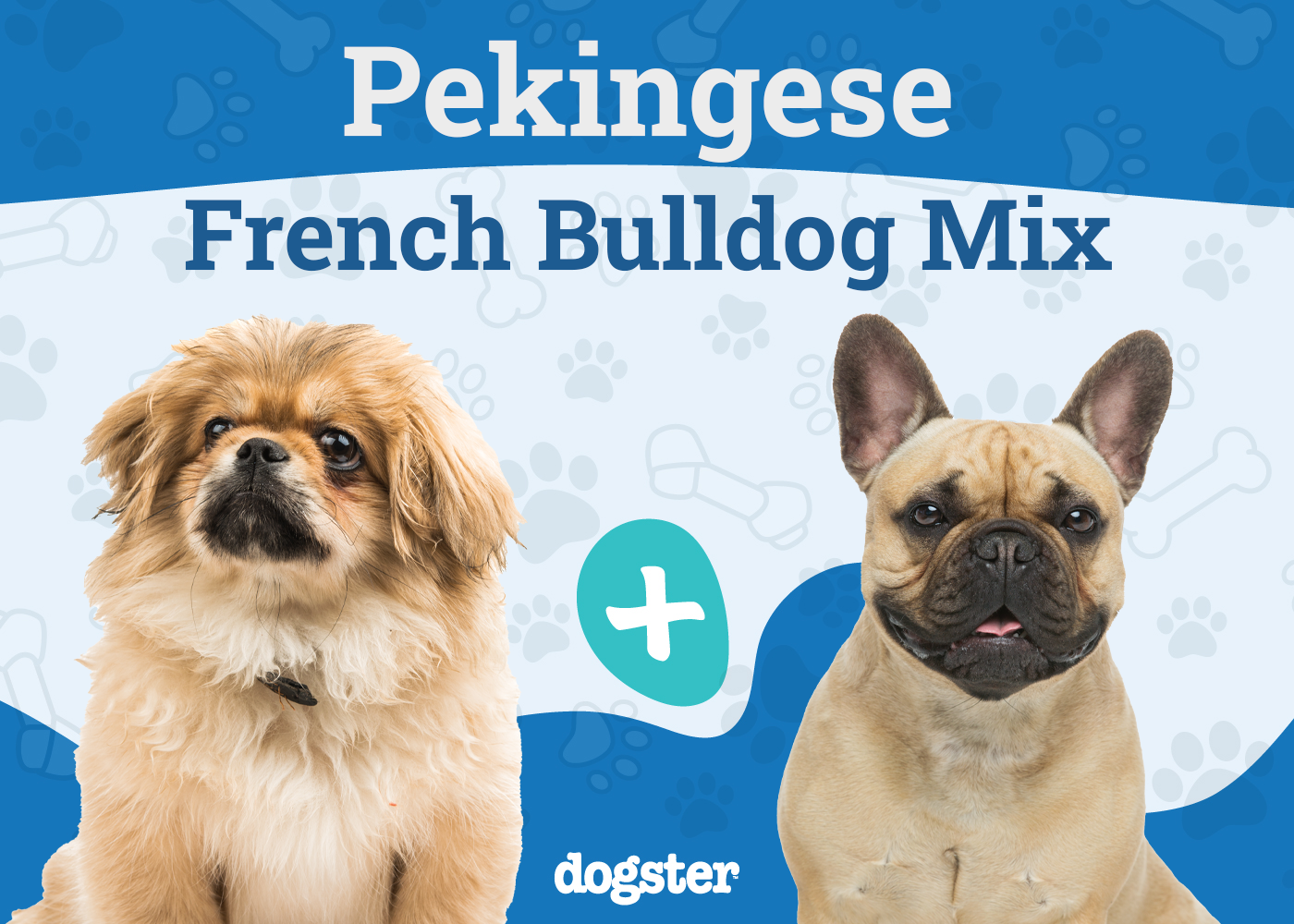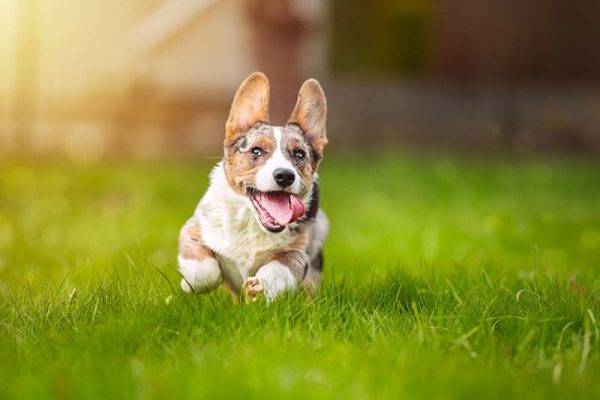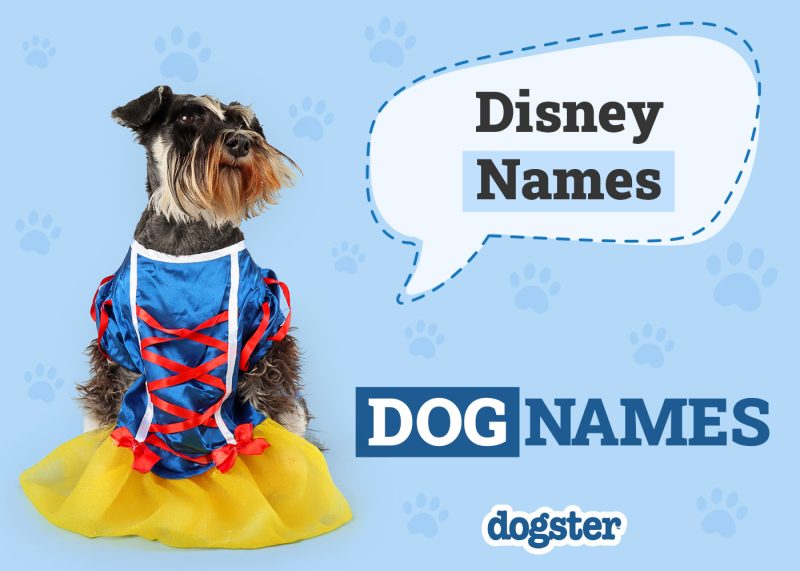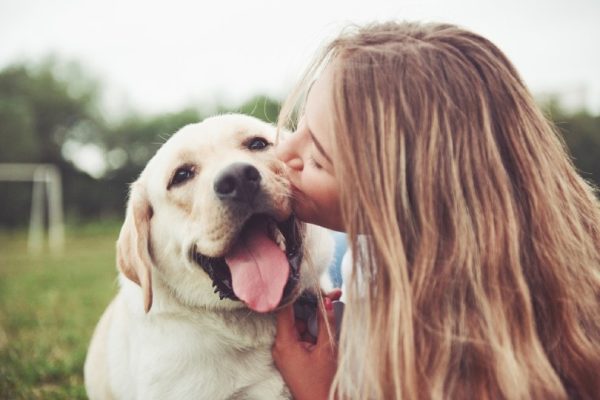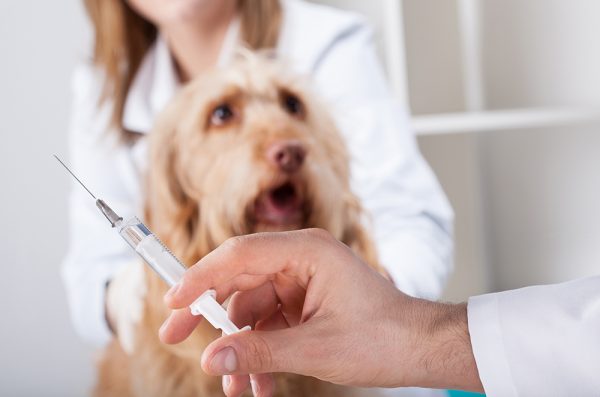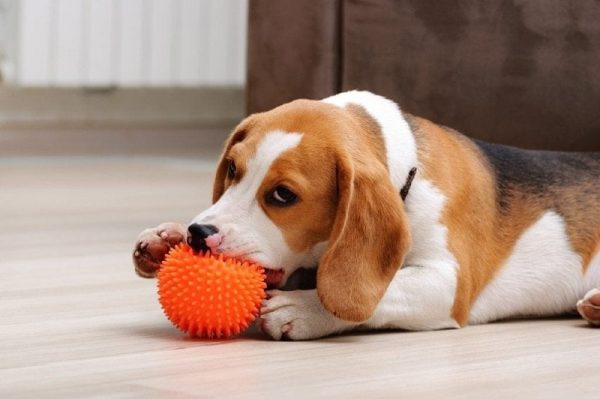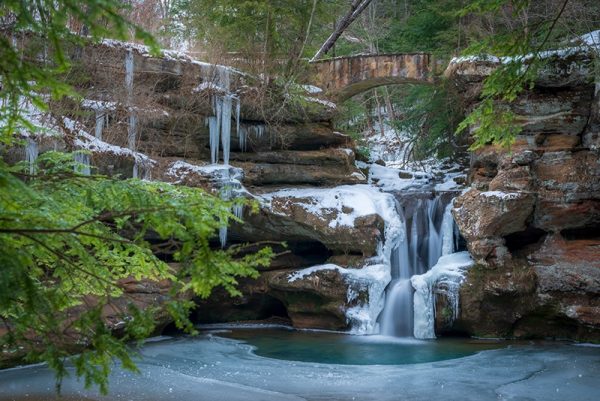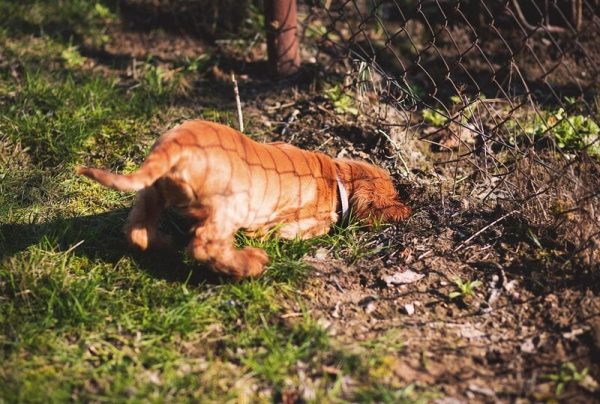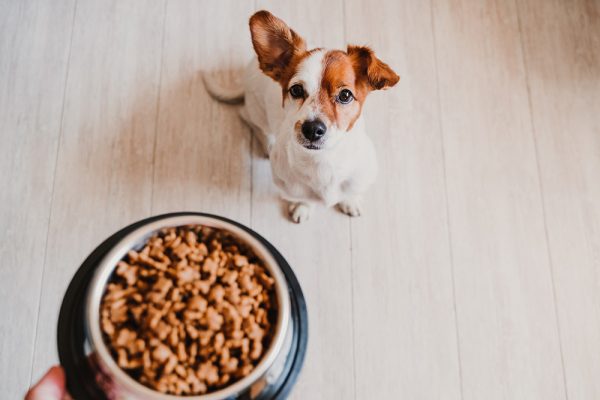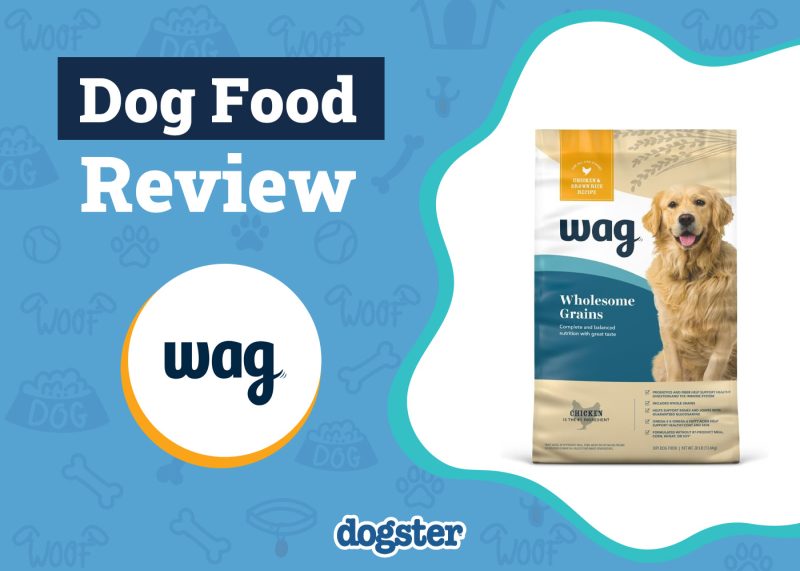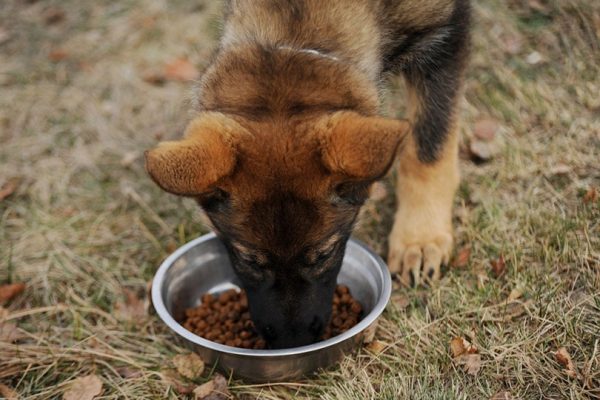In this article
View 8 More +The American Bullnese is a relatively new member of the so-called designer dogs. This pup brings the regal appearance and manner of the Pekingese with the playful and clownish nature of the French Bulldog. The hybrid’s beginnings include influences from three other small, short-nosed breeds, although these two are the main focus.
This pup is a sweetheart with many traits enthusiasts love about the parent breeds. They are adaptable dogs who are suitable for apartment dwellers. They are also relatively easy to train, making them an excellent choice for first-time pet owners. The American Kennel Club (AKC) doesn’t recognize the American Bullnese as a breed since it is a hybrid. Nevertheless, the breed has its fair share of followers.
Breed Overview
Height:
8–12 inches
Weight:
15–30 pounds
Lifespan:
10–14 years
Colors:
Cream, brown, black
Suitable for:
Active families looking for a playful, affectionate dog
Temperament:
Friendly, happy, loyal
The American Bullnese has many characteristics of toy dogs, thanks to the contributions of the parent breeds. They are calm and loving with their family members, although they won’t hesitate to call out strangers with a warning bark. They can make an ideal companion for individuals and seniors who can devote time to their canine companion. So, what else should you know about these designer dogs? Keep reading.
American Bullnese Characteristics

American Bullnese Puppies
Locating an American Bullnese puppy may be challenging. The American Bullnese Association has a Facebook page that may help you in your quest to find one, though.1 We recommend getting a dog over 8 weeks old, preferably 12 weeks. That will give your pet sufficient time with their mother and littermates to avoid becoming fearful as an adult.
Researching your purchase is essential, given the lack of official recognition by AKC. However, the Continental Kennel Club (CKC) recognizes the breed and has a conformation standard. It’s worth noting that the French Bulldog is the most popular breed with the AKC. Some individuals may be disinclined to pair their purebred dogs with a hybrid, which may affect the American Bullnese’s availability.
American Bullnese Origin & History
The Pekingese is an ancient breed with a history going back thousands of years. The French Bulldog came onto the scene in the 1800s. The American Bullnese is the new kid on the block, with selective breeding by Robert “Bobby” E. Rice of Jacksonville, Florida, leading the charge in the 1970s. Rice’s goal was to develop a pup that embodied the traits he favored. The breeds he chose reflect this mission.
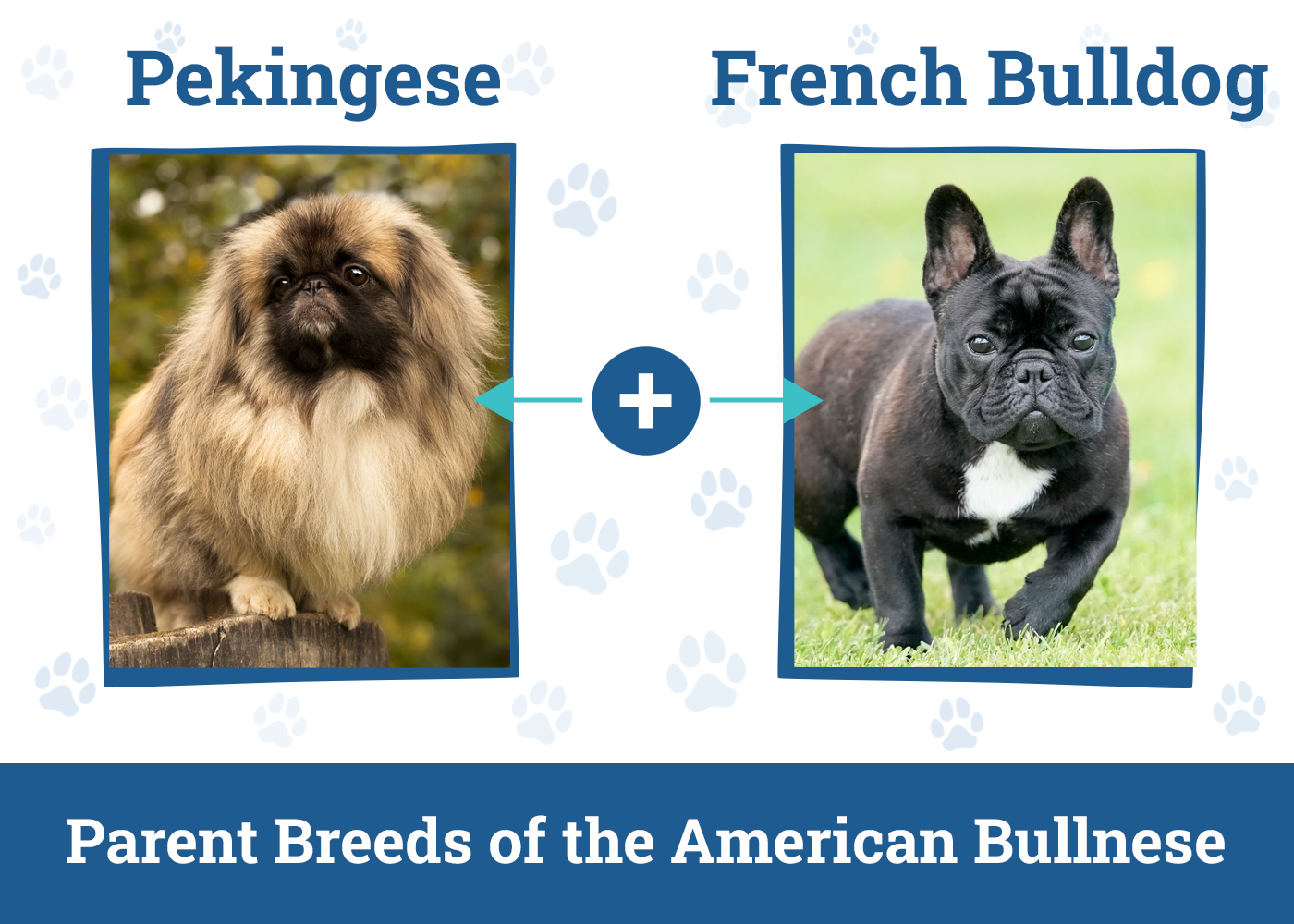

Temperament & Intelligence of the American Bullnese 🧠
The parent stock brings many desirable qualities to the American Bullnese. They are energetic but not overly so. They are playful and loyal companions. You may see a stubborn streak in this dog that comes from their ancestry and what scientists call the small-dog syndrome. Some pets act like tough guys despite their small size, and they may be more reactive than other laidback breeds.
Scientists aren’t sure why small dogs can be aggressive. It may be an instinctive response because of their size. It may also be a product of their upbringing, which may inadvertently encourage this behavior. Some research suggests a link may exist between short-legged canines and aggression. This information underscores the need for early training and socialization.
Are These Dogs Good for Families? 🏡
The American Bullnese can make an excellent family pet. They are devoted animal companions and protective of their tribe. We recommend teaching your children how to behave around your new pet, given the animal’s small size. They shouldn’t try to pick up the dog or play too rough with them. Both parent breeds have a moderate tendency to bite, which you should curb when the pup is young.
Does This Breed Get Along With Other Pets? 🐶 😽
The American Bullnese has a moderate prey drive and may chase other pets. Early socialization is imperative, making meeting new canine friends and people a must. We don’t recommend housing them with large dogs, which may encourage small-dog syndrome if the animal feels threatened. Short-faced dogs like this one are also prone to breathing issues if they get overexcited during play with other pets.

Things to Know When Owning an American Bullnese:
Food & Diet Requirements 🦴
You should feed your American Bullnese a high-quality commercial diet suitable for the animal’s life stage and weight. While they are playful dogs, you must ensure their caloric intake aligns with their activity levels to prevent obesity. We suggest monitoring your pet’s body condition closely to keep it within a healthy range.
You can offer your puppy three to four meals daily as recommended by the manufacturer’s feeding instructions. You should also ensure fresh water is always available. Puppies need a minimum of 22.5% protein from their food by dry weight. You’ll find this info on the product’s label. They should also get at least 8.5% fat to keep up with their energy needs.
You can cut back to two meals daily once your pet reaches adulthood. We recommend reserving treats as training aids. A small dog like the American Bullnese has low dietary requirements. A 20-pound pup should only get between 325 to 400 calories daily. It’s easy to see how a few extra treats or table scraps can set up your pup for unhealthy weight gain.
Exercise 🐕
The American Bullnese is relatively easygoing when it comes to exercise. Nevertheless, you should walk your pet daily to provide mental stimulation and opportunities to meet new friends. Animals that are active and socialize regularly are less likely to be fearful or have behavioral problems. It also improves their quality of life.
Training 🦮
We can’t overemphasize early training and socialization. The parent breeds are relatively easy to train. The treats you use to reward good behavior will go a long way toward refining your pet’s canine manners. Positive reinforcement is the best approach. After all, this pup wants to please you, and they can be sensitive animals when spoken to harshly.
Consistency is also vital to a well-behaved pet. Reinforcing your pup’s lessons is a wise plan. Remember, too, that your praise is just as rewarding for your pet.
Grooming ✂️
The American Bullnese is a short-coated animal. Nonetheless, you should brush or comb your dog weekly. It’s also an excellent time to check their ears and nails. They don’t require frequent baths and usually just need a bath when they start to smell or when their coat starts to feel too oily. Too many baths will end up damaging their skin and coat by drying them out and causing skin irritation, so make sure you use a high-quality shampoo when the time comes.
You should also examine their eyes for any irritation or redness. Their short muzzle doesn’t offer a lot of protection against the elements or obstructions like low-hanging branches. You should also clean the folds on your American Bullnese’s face. A quick wipe will keep them free of debris.
Health and Conditions ❤️
The main concern for this dog and others like them is their short muzzles and head shape. Scientists call them brachycephalic breeds. The primary red flag is obstructive airway syndrome (BOAS).
The anatomy of these dogs can make them prone to respiratory issues. Sadly, the parent stock is prone to weight gain, which can exacerbate these conditions. The French Bulldog’s body shape and weight distribution make it difficult, if not impossible, for these animals to swim. However, your vet can work with you to manage your pet’s care to minimize these risks.
If you need to speak with a vet but can't get to one, head over to PangoVet. It's our online service where you can talk to a vet online and get the advice you need for your dog — all at an affordable price!

That makes regular vet care imperative to monitor any issues. Reputable sellers will conduct health screens on their breeding stock to avoid passing on hereditary and congenital conditions. The Orthopedic Foundation for Animals (OFA) recommends testing for patellar luxation and hip dysplasia for French Bulldogs, a likely parent.
The OFA also suggests a cardiac exam because of the propensity of this condition in the breed. The seller should provide a health guarantee for your pet.
- Deafness
- Cataracts
- Patella luxation
- Cardiovascular issues
- Respiratory conditions
Male vs. Female
Males and females are similarly sized, although the former might be stockier. Their temperaments are also comparable. The primary influences on canine behavior are their home life and training. Your responsibility as a pet owner is to ensure your pooch gets the guidance they need as puppies.

3 Little-Known Facts About the American Bullnese
1. People Once Traded Pekingese Dogs
During the 17th through the early 20th centuries, Chinese people traded Pekingese dogs with the Europeans. Interestingly, they preferred pups with spotted tongues. The Chow Chow is the most well-known for this trait, although over 30 other breeds have this curious feature.
2. We Can Thank Three Countries for Contributing to the Development of the French Bulldog
Of course, France tops this shortlist with the pup’s name and small size. However, England provided the breeding stock, and American enthusiasts selectively bred the dogs to encourage their distinctive appearance and ears.
3. Chinese Emperors Treasured the Pekingese as the So-Called Imperial Dog
This brush with royalty is evident in this dog’s personality. It’s almost as if the dog knows they’ve had friends in high places by their regal demeanor.

Final Thoughts
It’s easy to fall in love with the American Bullnese. Just one look at this pup will melt your heart. They are sweet animals that need a gentle hand to make them lovable and well-behaved pets. While it may be challenging to find one, you’ll be amply rewarded with an affectionate and playful pup. The American Bullnese is sure to make a delightful addition to your family.
